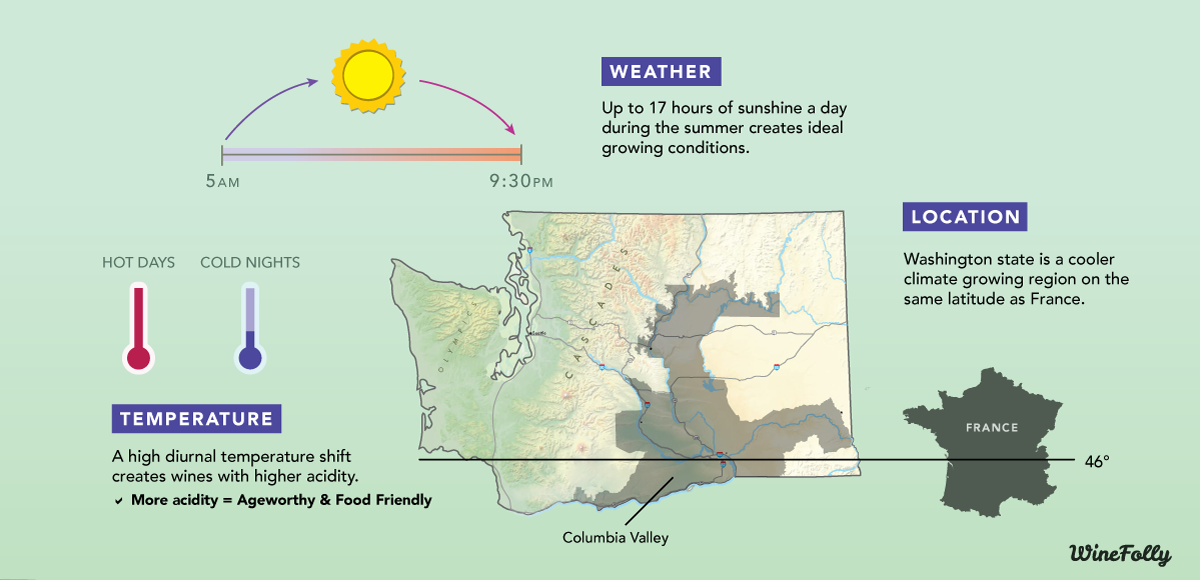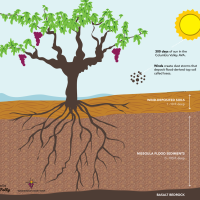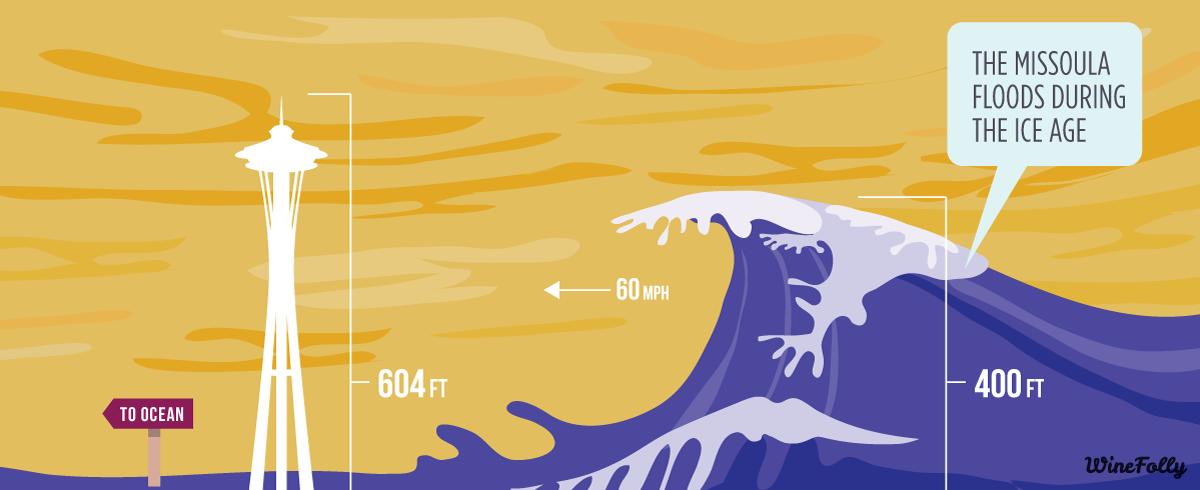Taste Washington Terroir – Washington wines are famous for bold fruit, zesty acidity and balanced tannins, but why? Find out how ancient floods created a region that’s good at growing grapes.
These floods were big, really big.
Remember the earthquake in Japan in 2011? That earthquake caused a tsunami that rose up to 30 ft and hit Japanese beaches at 50 mph. Comparatively, the floods that carved out the Columbia Valley were over 10 times taller (400 ft tall) and raged across the land at 60 mph.
Fortunately, this happened 20,000 years ago, so there weren’t many Washington residents — save for a few wooly mammoths.
A lil’ History on Washington’s Terroir
How did flooding create a wine region?
The land in eastern Washington closest to the ancient Lake Missoula is sparse and this area is called the ‘Scablands’. During the cataclysmic floods occurring at the end of the last ice age, the torrents rushed down the Clark Fork and the Columbia River to collect in eddies and valleys and drop sediment. If you can imagine, they dropped everything from large boulders and trees to microscopic silt. The silt, referred to as ‘Warden silt loam’, is what collected in the many river valleys of Washington.
So, what is it about this flood that makes wine so good?
Washington is known for fruit-forward wines — soils are only 20,000 years old. South Africa makes herbaceous wines — soils are nearly 50 million years old.
The deposits are deep, relatively low nutrient and well drained. For vineyards this is perfect terroir; it means the vines grow very deep root structures to collect nutrients and water. The more the vine is integrated with the soil, the more it creates consistently good grapes.
Just so you know, there is a strange correlation to the highest rated wines coming from mature vineyards with deep deposits of this special flood soil. Need an example? Check out Horse Heaven Hills (watch the overview).

What Wines Grow Best in Washington
Several different varieties show promise in Washington State. Since it’s new and growing, hopefully winemakers will experiment with more unique varieties. For the time being, the grapes that grow the best in Washington are:
- Cabernet Sauvignon, Merlot, Petit Verdot, Malbec, Syrah and other southern French varieties
- Sangiovese and other central Italian varieties
- Tempranillo and other northern Spanish and Portuguese varieties
- White Wines: Riesling, Chenin Blanc, Gewurztraminer, Viognier, Marsanne and Roussanne
Terroir is more than just dirt
Unlike other agriculture products, wine grapes need to struggle a little to create the sweetest and most intense grapes. There are other factors that go into making perfect grapes.

Concentrated Fruit Flavors
The younger soil keeps the wines tasting fresh and fruity but, in order to have the concentration, there needs to be a lot of sun. Eastern Washington is a high desert area that gets 300 days of sun!
Heightened Acidity
The acidity in Washington wines is typically higher than California wines. This is what gives Washington wines a tart mouth-watering taste and it also means they have age-worthiness. In order to produce grapes with higher acidity in a sunny area, the nights need to be cool. Cold nights reset the vineyards and make it possible so that as grapes ripen, they don’t lose precious acidity.
Medium Tannins
Great wines have tannin, but not too much. Wine growing and grape selection (e.g. Merlot) has a lot to do with how much tannin a wine has, however a region’s environmental traits affect how the tannin tastes. Thick skins and ripe seeds are important factors to a smooth and ‘sweet’ tasting tannin.

We created this infographic originally for the Washington Wine Commission with the assistance of Washington wine expert, Sean Sullivan . Want to help create a guide on your region? Put Madeline in contact with your local wine commission.


